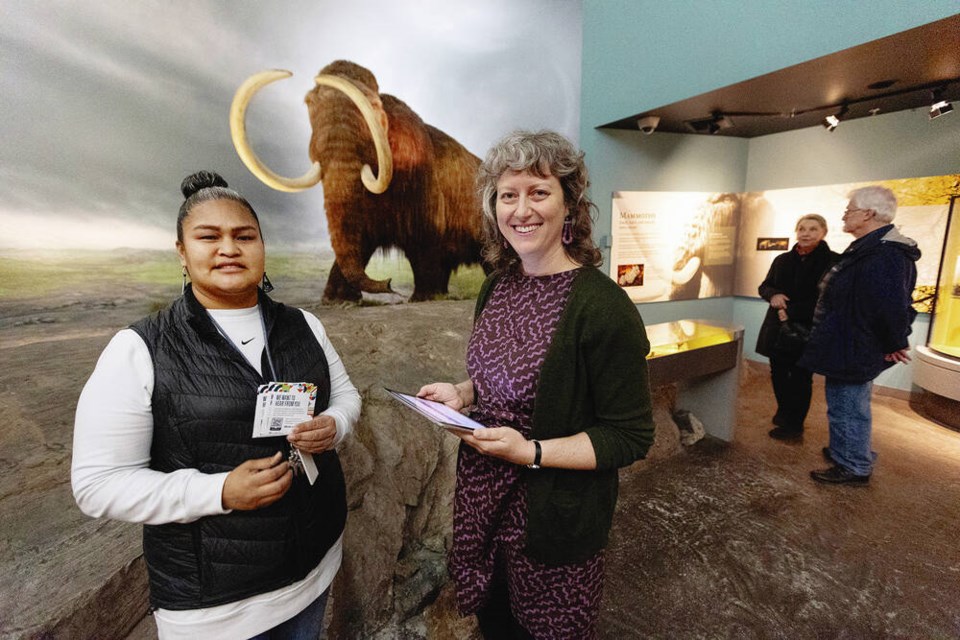The Royal B.C. Museum is starting a second round of community engagement across the province that will ask British Columbians broad questions about the museum’s location, content and accessibility.
The engagement follows a first phase in early 2023 that saw museum staff hold sessions across the province to talk about the museum’s future and the physical challenges facing the building, which has seismic issues.
Feedback from those in-person and virtual sessions helped shape the second phase, which started with museum visitors on Dec. 22. The museum set up iPad stations and QR codes to engage visitors, and staff in the museum are asking visitors to complete a 19-question survey.
Engagement will move to in-person and virtual sessions in the new year, with events in more than 32 communities planned so far, said acting CEO Tracey Drake.
“We’re seeking understanding from the people of B.C. on how we can better respond to the needs of communities across the province. How can we be a better provincial museum to all British Columbians?” she said.
The survey focuses on four themes: location, Indigenous reconciliation, diversity and representation, and inclusion and accessibility.
During the first phase of engagement, the museum heard that it should prioritize connecting with people outside of Victoria.
The survey asks how the museum can do that, with options for more online exhibitions, travelling exhibitions, virtual tours, and satellite locations in libraries, community centres and cultural centres.
Reimagining the museum will require substantial resources and investment, Drake said.
One question asks British Columbians to rank their preferences on how to deal with the building that houses the museum. Keeping it as is would retain the seismic risk and accessibility issues but require limited closures and minimum investment, while replacing the museum on the existing site would require a larger investment and long closure time.
The survey also considers reducing the focus on the downtown site and redistributing programming throughout the province via travelling, satellite or locally hosted exhibitions, or moving the museum out of its downtown location to a new site in Greater Victoria.
“Nothing is off the table,” Drake said. “We’re really looking at every facet of what we do, and how we can expand or change or modify the work that we are doing to best serve the province.”
Jeff Bray, CEO of the Downtown Victoria Business Association, said the business community is pleased to see the consultation moving forward to a second stage.
“I think we’re all looking forward to a revitalization of our treasured museum,” he said.
The museum’s third-floor galleries were closed in late 2021 to “decolonize” exhibits. In 2022, then-premier John Horgan said the museum would be closed from September 2022 until 2030 while a new building was constructed at a cost of $789 million.
That plan was eventually cancelled after public outcry over the cost and long closure.
Old Town has reopened on the third floor, which also houses a T. Rex exhibition that closes Jan. 7.
The First Peoples Gallery remains closed, but Drake said an announcement is coming in January about its future.



